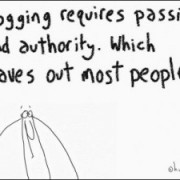Google: Transition from Local Business Ads to Location Extensions
Soon, Google will start transitioning from its Local business ads model to Location extensions. Location extensions is a new Adwords product upgrade that offers several benefits over location business ads.
Brands who have many store locations will benefit from the ability to use the same ad for several store locations. When a potential customer performs a search, their location or search terms are dynamically matched to your business locations, and your most relevant location appears within your ad on Google Search and Google Maps. The new format of Adwords also enables advertisers to create more effective ad headlines rather than having to stick with the business name.
Google suggests you start moving your location business ads to location extensions manually. All ads that are not moved to location extensions will be automatically resetelled by Google in the coming few weeks.
Here is a simple step-by-step guide by Google to help you through the transition.


 Businesses, content publishers media channels have been pushing for blog creation as a way of engaging existing and reaching new readers. With 133 million blog posts submitted on
Businesses, content publishers media channels have been pushing for blog creation as a way of engaging existing and reaching new readers. With 133 million blog posts submitted on 
